I cannot editorialize on Reeve, as I have only questions. Back in those heady days of the 80s-90s, Reeve astounding with his titanium framelock, the true elites of military world clamoring for, and getting, new exotic lightweight, rustproof toys such as the earliest MPKs by Mission, which gents were aerospace metals experts, only, and demanded by SEALs to simply copy a Mad Dog design....one HAS to figure actual knifemaker Reeve was approached to make beefier knives for such boys?
In any case, it never happened back then, leaving the door open for folk like Strider and Hinderer to run with the idea. Although earlier Reeve Sabenza blades were a bit beefier and more full bellied than of late, they never were what one would term a harsh use knife, but, a very refined cutter of Buck 110 size, much lighter, far better steels and blade design.
Of relatively late, the Reeve firm has introduced several knives, most of which will not be covered, because if I cannot type it, I will not own it, knives such as the Umathurmond or whatever. But it is a large heavy duty folder, blade stop studs against frame front (with rubber bumpers?), and prepped them for further beef-ups of the line.
They introduced a heavier duty Sebenza 25 which was not well accepted as a replacement for the little changed over the years, now stock, Sebenza, of 21 nomenclature. The 25 was quite different, had a few bugs, was only recently withdrawn, tweaked, and rebranded as the Inkosi, which also used some things from the Ummagumma or whatever.
The Sebenza 21 is still in the line, as is the Inkosi, and are their staples, and one cannot help but feel they would be happier if the Inkosi still became the Sebenza successor, given the recent $40 price hikes given to Sabenzas, alone, to bring their price up to equal that of the heavier duty Inkosi.
Which brings us to the present, and pictured below. The stronger knives. The Sebenza deep hollow grind and beautiful cork wheel finish seems to be gone entire from the line, perhaps to include the latest embellished knives, from what I can see from vendor site photos, anyhow. The grind line of the deeper version more a 90deg turn at the handle, the new grind angles back, as for spotting.
Only an aesthetic thing, but, when you sell premium goods, it had better be good. The new thing is total stonewash (which admittedly hides scratches better by being prescratched), stronger thicker hollow grind, and I will say the knives still cut like blue blazes.
They also have introduced the stouter sheepsfoot, along with about everybody else, a wonderful blade, whether Benchmade, Spyderco, or Reeve. It, also, has a thicker grind, and is offered in the 21 and Inkosi line, the blade style termed Insigo in their relentless Zulu name ways.
A quick foray into the marvelous engineering of the Sebenza is necessary at this point. The sides and spacers are meticulously machined so that the handle sides remain dead parallel to within circa half a 10 thousandth. This is required due to blade hinge design, such as on a precision hinge used on exotics such as aircraft spoilers or older and more finely crafted internal combustion engines. The blade has an oversize hole, through which fits a cylindrical bushing, the bushing slightly longer than blade thickness, by precisely the thickness of bronze thrust bearing washers fitted AROUND the protruding bushing on both sides, and all dead flush. This is fitted into the precisely gapped handle sides, and an internally threaded pivot inserted through handle/bushing/handle, and cap retainer screw at pivot far end installed, retaining the pivot. This means when the screw tightened down against handle drawing both together, the handle sides bottom on the ends of the bushing and against the thrust washers, with zero direct force applied to blade. When properly tensioned, this allows the thrust washers to rotate, the bushing to rotate, and the blade to rotate about the bushing, with near zero sideplay. At no point does the pivot rotate, and not only does it not require loktite, but such is sternly warned against, and likely not warranted. It is a hidden marvel, folk, and 20yrs ago, my thought that simply a much larger, otherwise identical version, with thicker blunter tipped/edged blade would have sold like hotcakes with the crowd tasked with digging empties out of asphalt for evidence, or breaking ammo pallet straps. The mechanism is no loosey-goosey butterfly knife flicker, nor even the smoothest, rather, the zero/zero close tolerance fit more akin to something massive sliding on greased rails to solid thunk of locking.
Now, let's get to other beef-ups...the thicker bladed Inkosi, which I always want to call Inksigo after typing the blade style name. There is no taking away that it is stronger. Much larger diameter pivot, thicker walled as only a pivot and cap screw, no bushing through blade, a solid larger pin as blade stop, rather than smaller screw through another precisely machined spacer, it even floating through a close tolerance hole on one side, and the blade obviously thicker and stronger than even the beefed up Sebenza. Since it lacks the bushing, the handles simply clamp on the blade and enlarged/fixed thrust bearing washers, tension is screw adjusted, the pivot now like most other knives, free to rotate, and requires loktite to stay put. The frame has well designed finger grooves. As for personal problems with the design, the lowered lock side in a finger groove (also for now dual thumb studs) makes it much harder for my blue collar thumbs to disengage the lock bar. The elimination of the lanyard hole in back, and tying of lanyard around the simplified monolithic stainless spacer in back puts the lanyard at top rear corner of handle and hard against palm in a most annoying way. Removing the lanyard leaves the rear bare, and devoid of the color of any titanium bushing spacer, a greatly missed bit of brightness in a quite monotone knife, aside from thumbstuds. They have eliminated direct titanium lock bar contact with the blade, by inserting a large ceramic ball in the front interior corner of the bar, it pulls double duty as side detent ball and locking surface of the bar.
But, if you want a harder use Sebenza style knife, there is no denying that they nailed it. Personally, I find one is enough, and still buy the odd Sebenza 21 while still being made, same as I buy the XM series Hinderer, and the earlier style minus his latest lock bar steel insert.
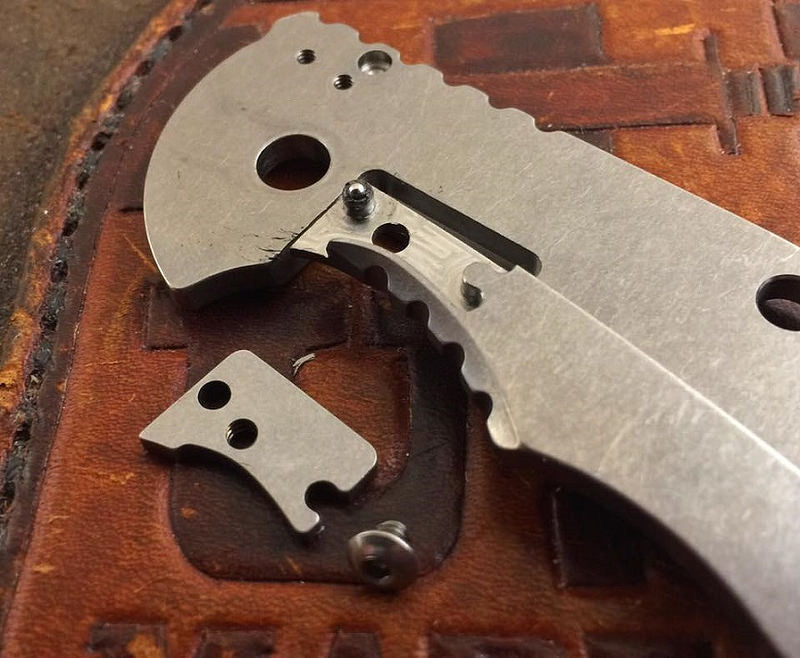
(sorry no Reeve ceramic ball pic, but, it's a ball)
I do not baton my knives and no chronic flicker, both Reeve and Hinderer bare lock bars will outlast me. And I personally question both designs as to concentrating all force in an even smaller areas, except only to titanium on the back side of whatever device. Only time will tell, but not on my dime.
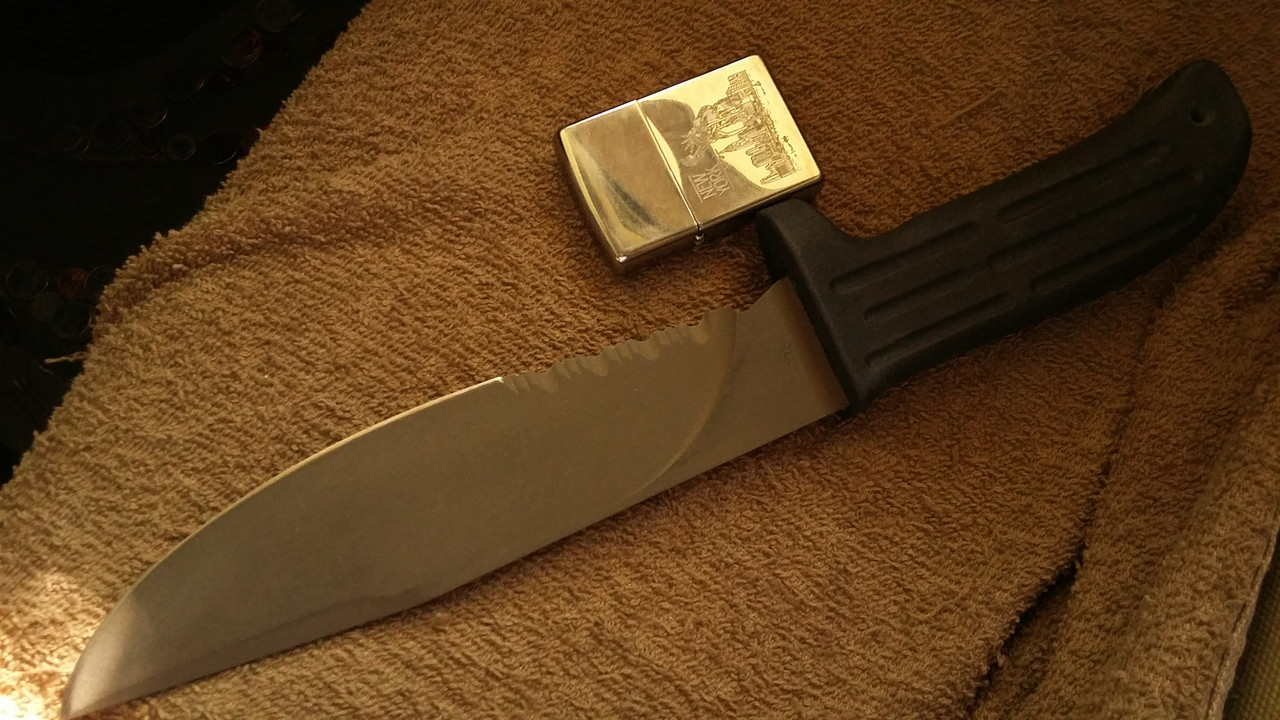
older and newer grind
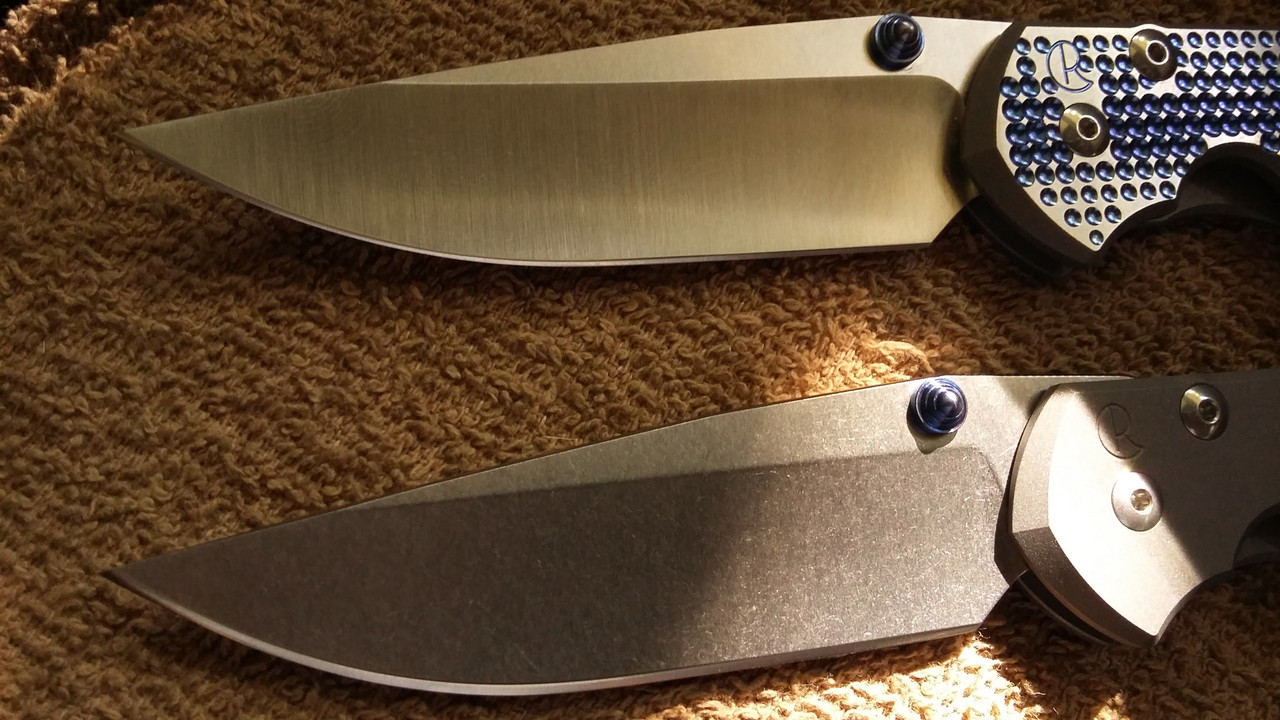
Inkosi top and Sebenza bottom
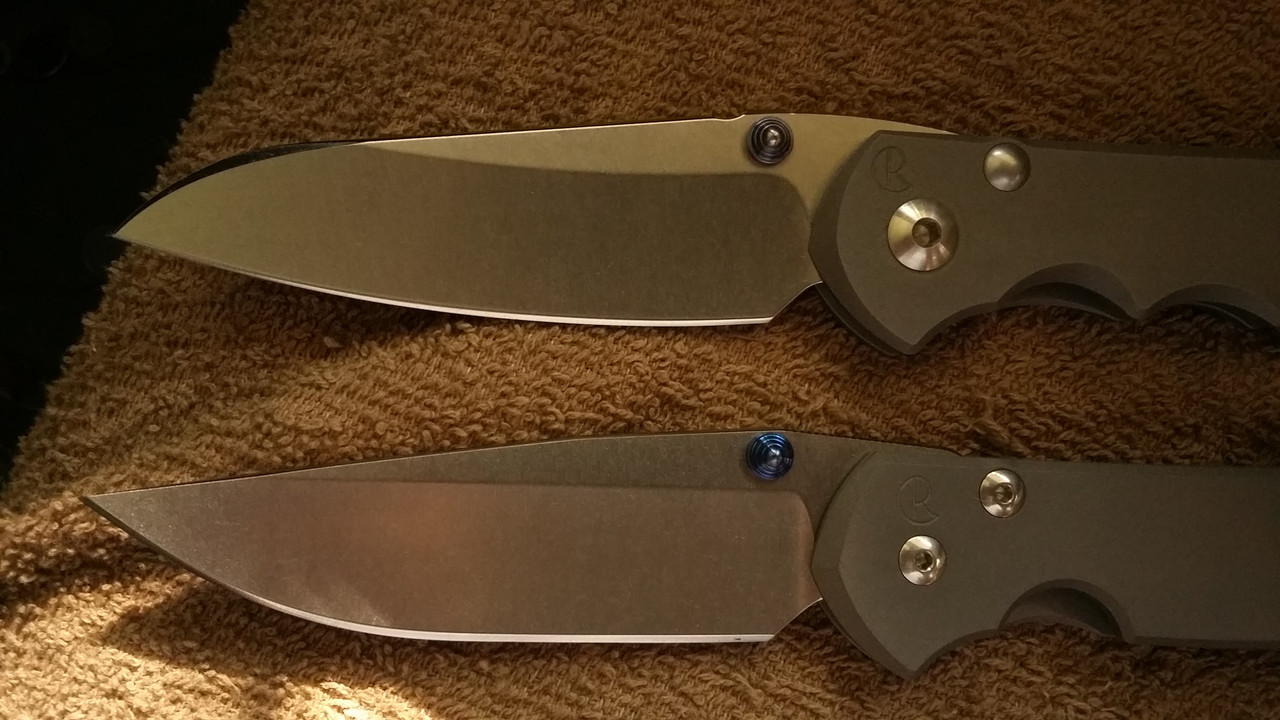
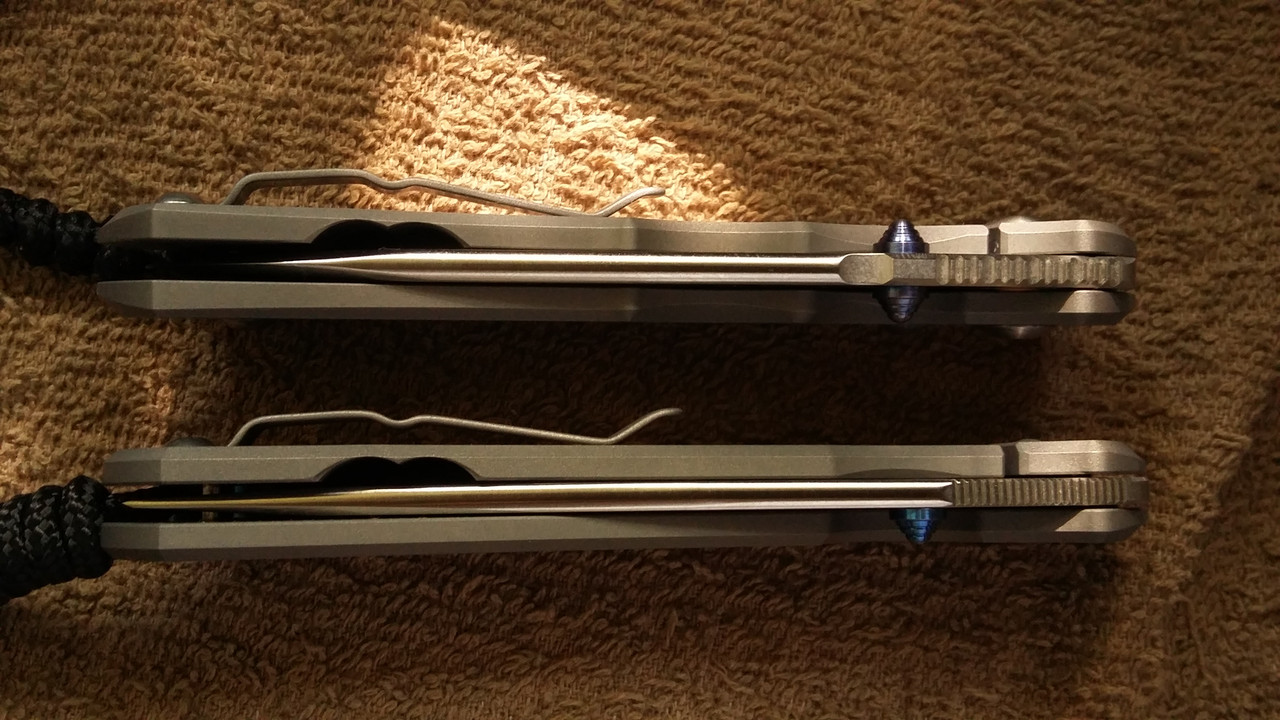
Rather picture poor on Sebenza/Inkosi comparisons, botched them, and will add tomorrow with better light.
With both the Hinderer and Reeve as integral frame lock folders with thumb studs or flippers, none are my ideal of big, tough folders for constant daily use of deploying/folding. All three surfaces, lockbar, stud, and flipper, put uncommonly large amounts of poorly leveraged force against small areas of finger or thumb when properly tensioned for safety, and become annoyingly painful, quite fast, as if a very oversprung poor leverage lockback. Would very much prefer something as a large well leveraged midlock back with an opening hole such as Spyderco uses, but with blades such as pictured here, including Reeve cutting edges near total blade length and stop stud in blade against frame front. Nothing even close, aside from an absurdly large Spyderco lockback, which, of course, I had to buy, even though blade too thin to scale for such a large knife.
Still waiting.



